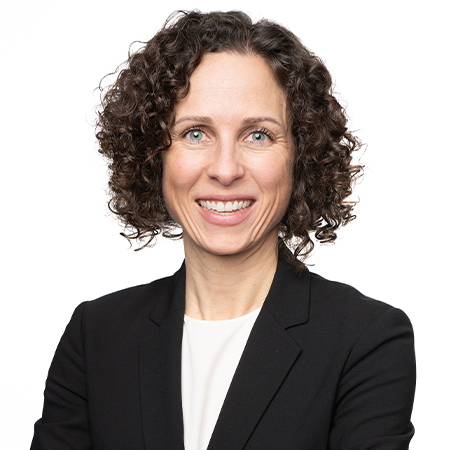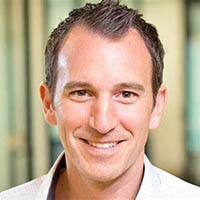While the main focus of global climate action has been to reduce emissions of greenhouse gases (GHGs), more recent scientific analysis shows that at our current trajectory, simply reducing emissions will not be enough to avert the worst impacts from climate change. We will also need to remove CO2 from the atmosphere, both to reduce the concentration of GHGs in the air and also to account for new emissions that are hard to abate using existing technologies.[1]
Direct air capture (DAC) technology is one form of CO2 removal (CDR). DAC pulls CO2 out of the air using chemical reactions. When air moves through a DAC apparatus, CO2 reacts with the chemical components in the system, becoming trapped. The trapped CO2 can then be sequestered deep within the earth.
DAC is distinct from point source carbon capture and storage, a process that mitigates the CO2 produced during industrial processes, as it removes CO2 from the atmosphere rather than just preventing it from being emitted in the first place. Given the comparatively low levels of CO2 in the atmosphere (~423 parts per million), DAC has to move a lot of air to capture one ton of CO2 versus point source carbon capture which captures it from a CO2 dense airstream, making it a more challenging and expensive problem to solve.
At the recent Energy Disruptors UNITE Summit, Damien Steel, CEO of Deep Sky, spoke about the promise of carbon removal technology, and why he believes Canada can become the global epicenter of the carbon removal industry. Deep Sky is a Series A funded startup that specializes in building and scaling carbon removal projects.
The role of DAC in reaching net zero goals
DAC is a promising tool in the fight against climate change. It has the potential to help remove both legacy and ongoing emissions.
“When you look at our goals as a society to decarbonize, the IPCC has us being net zero by 2050,” says Steel. “In order to achieve that by 2050, the estimate is that we need to be removing, not capturing, removing, 10 gigatons of CO2 a year. That's 10 billion tons of CO2 a year. Why? Because there are certain things that we do that we just can't decarbonize.”
“We need to be removing, not capturing, removing, 10 gigatons of CO2 a year. Why? Because there are certain things that we do that we just can't decarbonize”
Damien Steel, CEO, Deep Sky
“And just to really level set here [on the scale of the challenge], one commercial facility, which has yet to be built on this planet, [operating] at full scale would be about one million tons a year, and we need to be removing 10 billion.”
While there is still a gulf between the potential of DAC and the reality of it materially helping to mitigate climate change, the technology has a number of benefits in its favor. It is scalable, it has relatively low land use requirements and there is flexibility as to where it can be located. And, while the technology is fairly new, it is quickly proliferating.
In November 2024, Deep Sky announced that it had sold 10,000 Carbon Removal Credits to RBC and Microsoft, a first for the business. The removal will take place over a 10-year period and will be facilitated by Deep Sky Alpha, the world’s first carbon removal innovation and commercialization center.[2]
Deep Sky Alpha is currently working on a project to test, compare and benchmark DAC technologies. To start, the lab will deploy eight different DAC systems side by side to measure and validate their performance.[2] Deep Sky views this as a way to accelerate the scaling and commercialization DAC.
Overcoming the hurdles of implementation
While there is a lot of promise in DAC, there are a number of obstacles to overcome before it can be applied practically, one of the largest being energy requirements. Currently, DAC is an energy intensive operation as explained above.
“The true cost of removing a ton of CO2 using DAC is over $1,000,” Steel admits. “But do I think we can get it down to a range of $200 to $400? Absolutely.”
To put that in perspective, reforestation costs, on average, less than $50 a ton.[3]
It is also imperative that renewable sources are used to power commercial DAC sites. Using natural gas, for instance, could result in a DAC plant emitting more carbon than it removes. DAC is also well suited to solve one of the issues posed by renewables, which is that they load the grid with variable supply that does not necessarily correspond to demand.
“So, this is a hypothesis we're working on, but the nice thing with direct air capture is that it is variable,” explains Steel. “What I mean by that is it doesn't need to be on all the time, twenty-four/seven. And there's actually certain technologies where there's different pieces of the technology that can run at different times in order to for the whole system to be going twenty-four/seven.”
In theory, DAC could be used to balance the grid and use excess energy produced at off-peak times by renewables.
Another challenge will be creating the demand for carbon removal, as Steel makes clear:
“I have a strong belief this market needs to be regulated in some way. And what I mean by regulated, I don't mean taxing individuals. I mean we need something we can trade. We need a commodity or a security that's a carbon credit. Otherwise, I just don't think you have true liquidity in a market.”
“I have a strong belief this market needs to be regulated in some way. And what I mean by regulated, I mean we need something we can trade.”
Damien Steel, CEO, Deep Sky
Canada sets out to be a world leader
The future of the carbon removal industry may very well be located in Canada. The country is a leader in renewable energy, meaning it could be well placed to meet the power needs of carbon removal. The country has large storage reservoirs and is building out its infrastructure to suppport underground carbon sequestration.[4] It also offers a Carbon Capture, Utilization, and Storage Investment Tax Credit for companies engaging in qualified carbon removal projects.
Overall, Steel is very positive about the direction of DAC and the role Canada has to play:
“If you believe the science, and you believe what we need to do in order for our children to live a life that at all resembles the one we have the luxury of living. We need to build a multi-trillion-dollar industry. And we need to build an industry that's multiple times the size of the oil and gas industry, and we need to do it really, really fast."
“Canada has all the elements to be a global leader in that industry. What Saudi [Arabia] is to the oil and gas industry, Canada could be for the carbon removal industry, and Alberta is the epicenter of that.”

